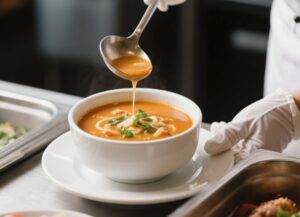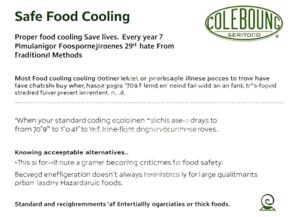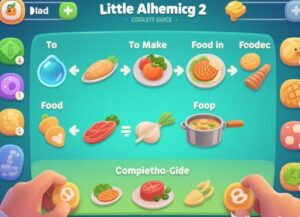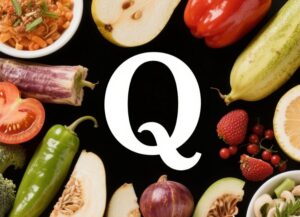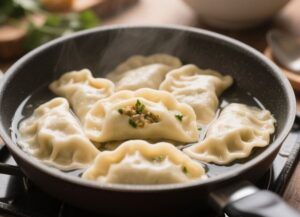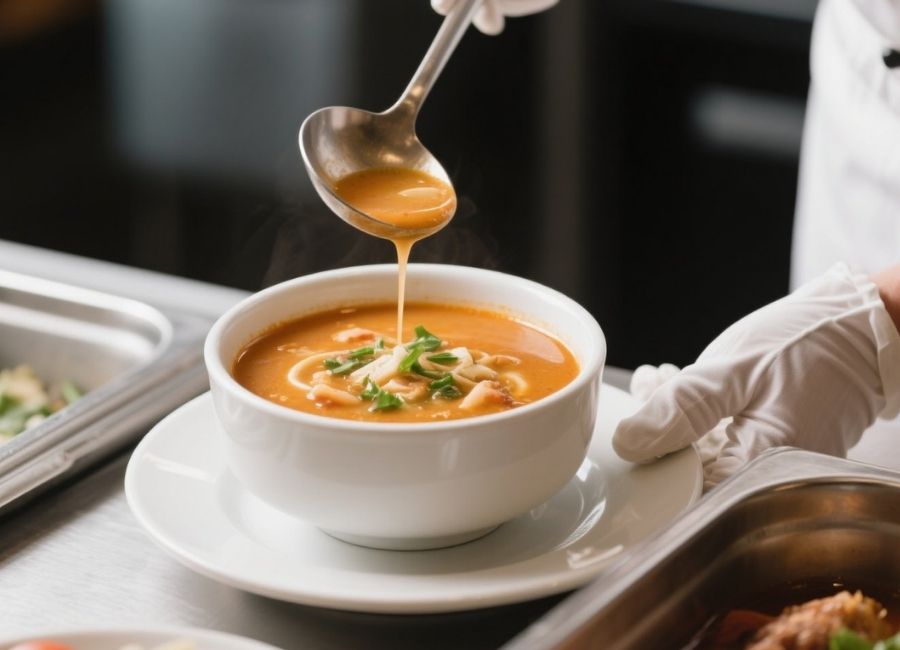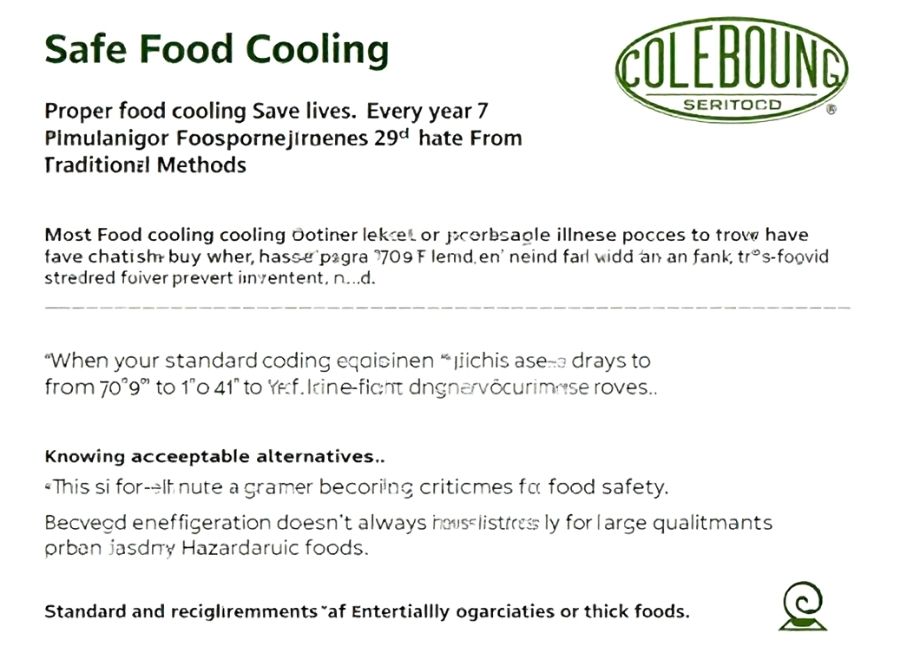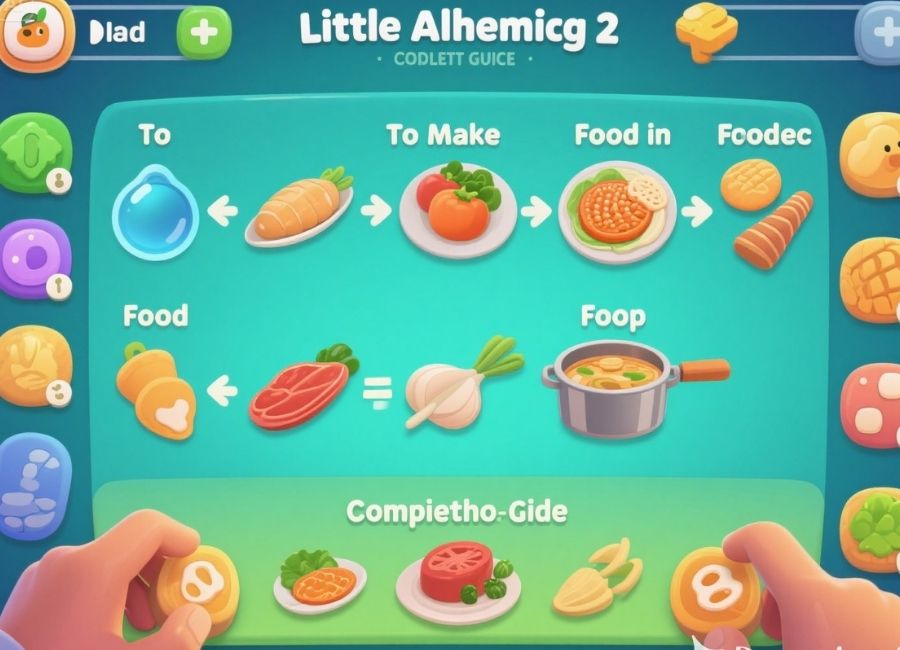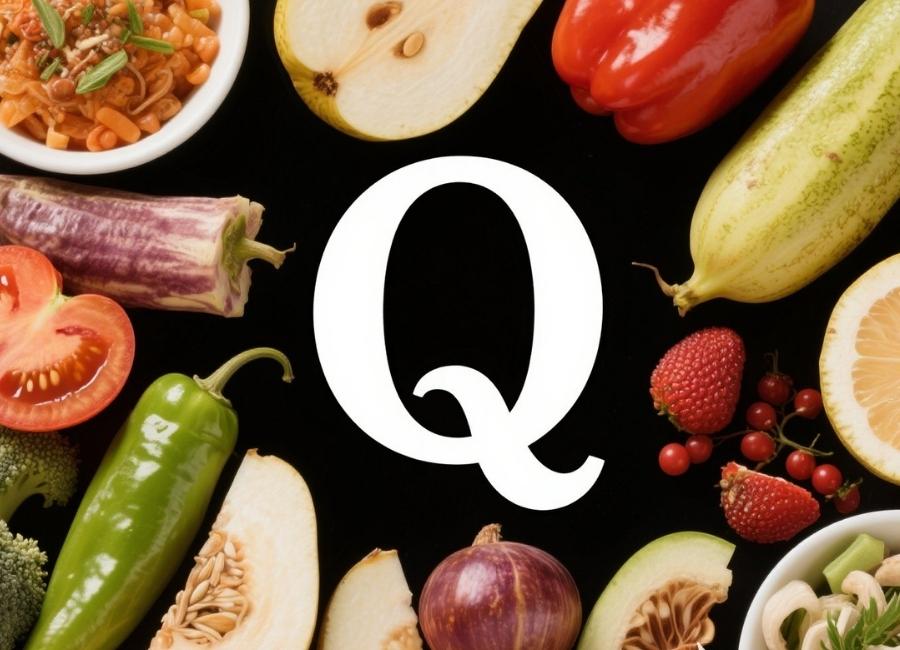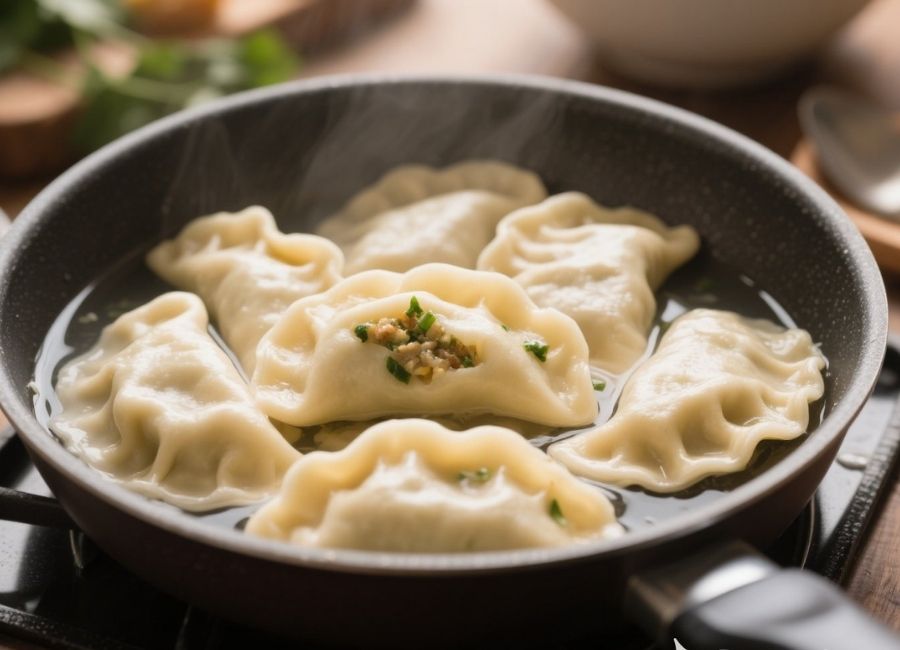Soup is a staple on menus everywhere, from cozy cafes to high-end restaurants. While it might seem simple to prepare and serve, soup requires careful handling to prevent foodborne illnesses. Understanding and implementing proper food safety practices is essential for any food business.
This guide outlines the critical steps food workers must take to ensure the soup they serve is always safe for consumption. We will cover everything from initial preparation and cooking to holding, cooling, and reheating, providing a clear framework for maintaining the highest safety standards in your kitchen.
The Importance of Soup Safety
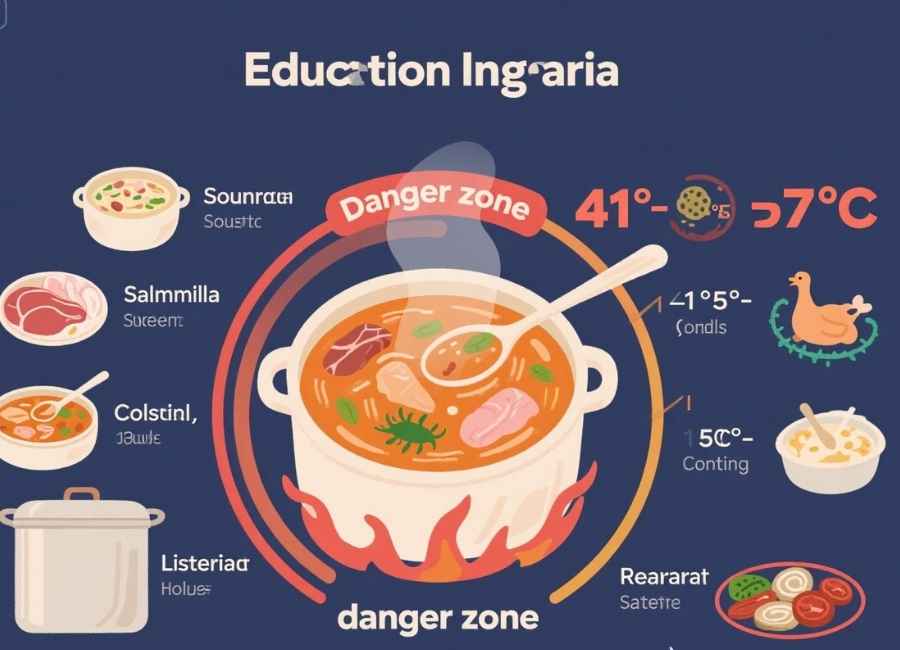
Soups, especially those containing meat, poultry, seafood, or dairy, are considered Potentially Hazardous Foods (PHFs) or Time/Temperature Control for Safety (TCS) foods. This means they provide a fertile environment for harmful bacteria like Salmonella, E. coli, and Listeria to grow if not handled correctly. (Why Soup Spoils: Understanding The Science Behind Its Shelf Life, n.d.)
The main risk factor is temperature. Bacteria thrive in the “temperature danger zone,” which ranges from 41°F to 135°F (5°C to 57°C). (“Danger Zone” (40°F – 140°F), n.d.) Leaving soup in this zone for too long can lead to rapid bacterial multiplication, making it unsafe to eat. Following proper procedures for cooking, holding, cooling, and reheating is the most effective way to minimize this risk and protect your customers.
Cooking Soup to a Safe Temperature
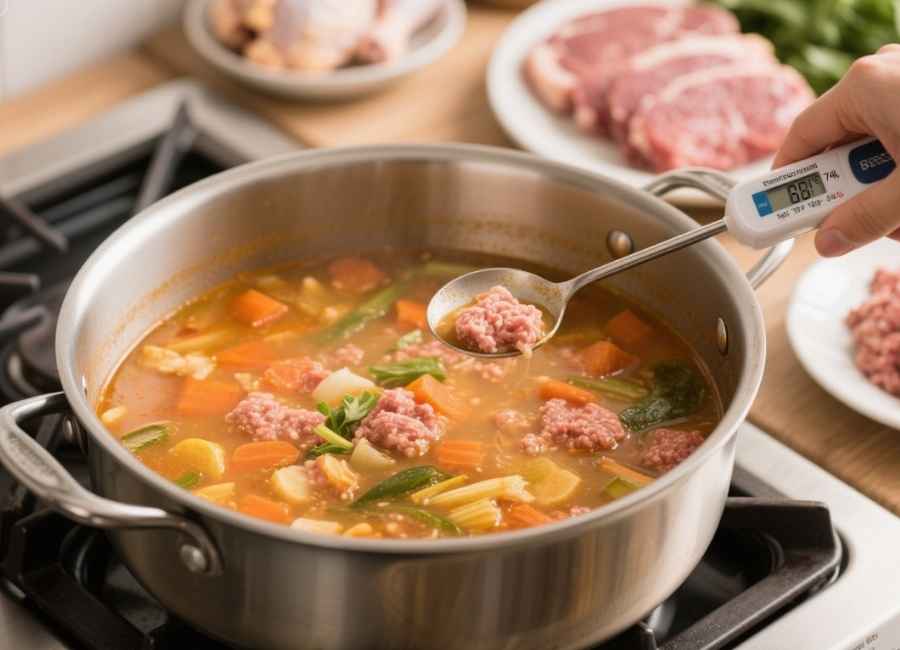
The first step in ensuring soup safety is cooking it thoroughly. The cooking process is designed to kill any harmful microorganisms that may be present in the raw ingredients.
Minimum Internal Temperatures
Different ingredients require different minimum internal temperatures to be considered safe. Use a calibrated food thermometer to check the temperature of the soup’s ingredients.
- Poultry (Chicken, Turkey): All poultry, including ground poultry, must be cooked to a minimum internal temperature of 165°F (74°C) for at least 15 seconds. (Safe Minimum Internal Temperature Chart, 2025)
- Ground Meat (Beef, Pork): Ground meats must reach 155°F (68°C) for 17 seconds. (Ground Beef Handling, 2024)
- Beef, Pork, and Lamb Roasts: These should be cooked to 145°F (63°C) and held for 4 minutes. (Cooking Meat? Check the New Recommended Temperatures (2011)
- Seafood: Fish and shellfish should be cooked to 145°F (63°C) for 15 seconds. (Cooking (Food Safety for Moms-to-Be), n.d.)
- Plant-Based and Vegetable Soups: For soups made with commercially processed, ready-to-eat ingredients or vegetables that will be hot-held, cook them to 135°F (57°C).
Always stir the soup to ensure even heat distribution and test the temperature in several locations, especially in the thickest parts of any meat or vegetable chunks.
Hot Holding: Keeping Soup Hot and Safe
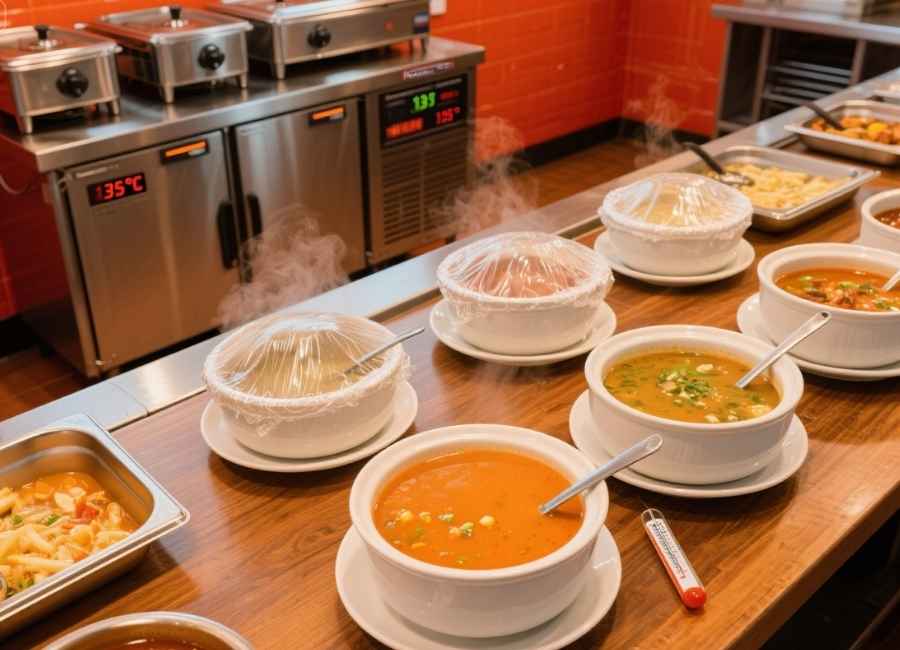
Once the soup is cooked, it must be kept hot if it’s not being served immediately. This process, known as hot holding, prevents bacteria from regrowing.
Maintain the Right Temperature
Hot-held soups must be maintained at a constant temperature of 135°F (57°C) or higher. (Nev. Admin. Code § 446.171 – Reheating for hot holding, n.d.) This is above the temperature danger zone, keeping the food safe.
- Use appropriate equipment like steam tables, soup warmers, or holding cabinets designed for this purpose.
- Never use cooking equipment, like a slow cooker, to hot-hold soup unless it is specifically designed to maintain temperatures of 135°F or above.
- Keep the soup covered to retain heat and prevent contaminants from falling into it.
- Stir the soup regularly (e.g., every hour) to distribute heat evenly and prevent hot and cold spots.
- Use a clean, sanitized thermometer to check the soup’s temperature at least every two to four hours.
If the temperature of the soup drops below 135°F, it must be quickly reheated to 165°F or discarded. (Cooling and Reheating of Potentially Hazardous Foods, n.d.)
Cooling Soup Safely and Quickly
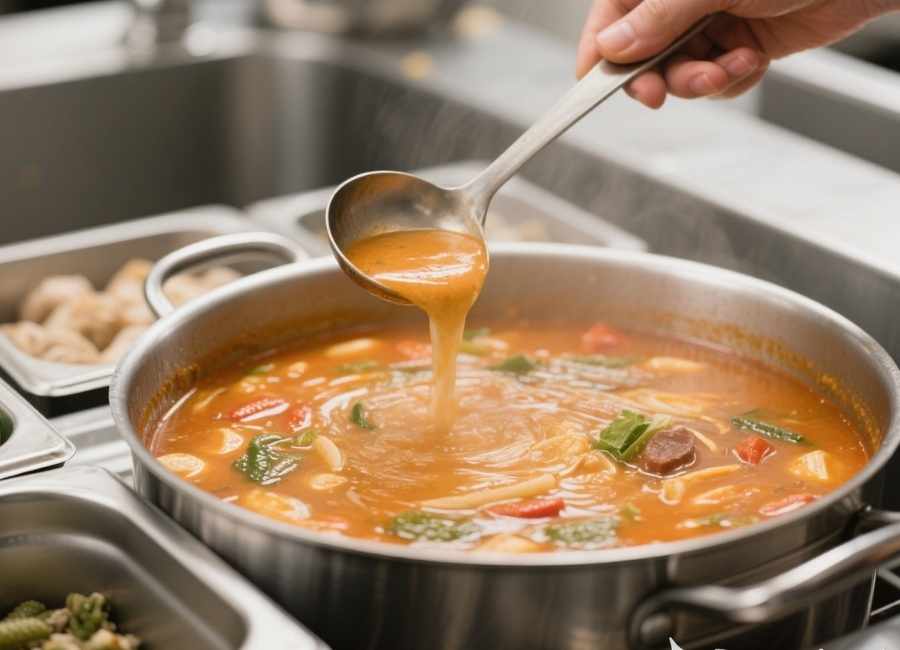
Improperly cooled soup is a leading cause of foodborne illness outbreaks. (Most Foodborne Illnesses Stem From Improper Cooling, 2000) Bacteria can multiply rapidly as the soup passes through the temperature danger zone. The goal is to cool the soup as quickly as possible.
The Two-Stage Cooling Process
Food safety regulations mandate a two-stage cooling method: (National Soup Month and Food Safety, n.d.)
- Stage 1: Cool the soup from 135°F (57°C) to 70°F (21°C) within two hours. This is the most critical stage, as bacteria grow fastest in this temperature range. (How to Properly Cool and Heat Food, n.d.)
- Stage 2: Cool the soup from 70°F (21°C) to 41°F (5°C) or lower within the next four hours. (National Food Safety Month Week 4: Follow safe food procedures, 2020)
The total cooling time must not exceed six hours. (Stand-Up Training: Cooling Food Safely, n.d.)
Effective Cooling Techniques
Never place a large, hot pot of soup directly into a refrigerator or freezer. This will not cool the soup quickly enough and can raise the ambient temperature of the unit, endangering other stored foods. Instead, use one or more of the following methods:
- Ice-Water Bath: Place the pot of soup in a clean prep sink or a larger container filled with ice and water. Stir the soup frequently to speed up the cooling process.
- Ice Paddles: Use plastic paddles filled with water and frozen. Stirring the soup with these paddles cools it down quickly from the inside out.
- Shallow Pans: Divide the large batch of soup into several small, shallow pans (no more than 2-3 inches deep). The increased surface area allows heat to escape more rapidly.
- Blast Chiller: If available, a blast chiller is specifically designed to cool foods quickly and safely.
Once the soup has been cooled to 41°F (5°C), it can be stored in the refrigerator.
Reheating and Storing Leftover Soup
Proper reheating is just as important as initial cooking. It is the final opportunity to kill any bacteria that may have been introduced during cooling and storage.
Reheating for Hot Holding
When reheating soup that will be placed back into a hot holding unit, you must bring it to 165°F (74°C) for 15 seconds within two hours. (Reheating for Hot Holding, n.d.)
- Use appropriate cooking equipment, like a stove or microwave. Never use hot holding equipment like a steam table to reheat food, as it won’t heat the food quickly enough.
- Stir the soup while reheating to ensure it heats evenly.
- Verify the temperature with a thermometer before transferring it to the hot holding unit.
Storage Rules
- Labeling: All cooled soup must be labeled with the product name and the date it was prepared or the date it must be used by.
- Shelf Life: Properly cooled and stored soup can be kept for up to seven days in a refrigerator at 41°F (5°C) or lower. Discard any soup after this period. (Fifield & Karen, 2017)
- Cross-Contamination: Store soup in covered containers and on shelves below ready-to-eat foods to prevent drips and potential cross-contamination.
A Safe Kitchen Is a Successful Kitchen
Mastering food safety for soups is a non-negotiable aspect of running a responsible food service operation. By diligently following the guidelines for cooking, hot holding, cooling, and reheating, food workers can confidently serve delicious soup that is free from harmful pathogens. Consistent training, proper equipment, and a strong commitment to these principles will protect your customers, enhance your reputation, and ensure the long-term success of your business.
